Do blue light glasses work? 8 facts at a glance

Computer glasses protect our eyes from harmful blue light by filtering out blue light waves. Or do they absorb them? And are we talking 100% here, or do these spectacles eventually block a lot less light than we think?
Blue light glasses, are all the rage. But hardly anyone knows whether blue light glasses work – or whether the eyewear industry is fooling us.
Time for an analysis of the facts. Don't you think?
1. What are blue light glasses, and how are they supposed to work?
Let's first take a look at the promise of blue light glasses manufacturers.
The idea behind the concept of blue light filter glasses is to protect from the „harmful“ rays of digital screens, such as computers, mobile phones, tablets and TVs.
They're marketed as special glasses that help us work, sleep and see better. They are meant to do that in three ways:
- Blue light blocking glasses help the body maintain its natural biorhythm after sunset, counteracting the blue light we receive from artificial sources.
- They protect against UV exposure, which can cause macular degeneration, cataracts, skin cancer and other unpleasant effects.
- And they improve visual acuity by reducing glare and light intensity.
But is all this true? And do these properties apply to every pair of blue light filter glasses, or are there better and worse ones?
To find out, we need to take a close look at the most common models and materials.
2.What are blue light glasses made of?
Let's examine three different brands of blue light glasses in more detail: the popular Spanish label Meller, the iconic Ray-Ban brand and Omega Optix, Lentiamo's blue light lens supplier.
The lenses of the Meller blue light glasses are made from CR-39, a type of plastic polymer (resin). It's the same material as many sunglass lenses are made from. The material is naturally scratch-resistant and blocks a big part of the UV spectrum.
Meller glasses are further divided into two categories: the ‚Bio-based‘ range (e.g., Bio Kubu Tigris), which is made from the biodegradable plastic G850, and the normal metal frame range (e.g., Yster Gold), which is made of stainless steel.
The Ray-Ban blue light glasses „Everglasses“ are also made out of CR-39, with the frames made out of TR90 (a type of durable nylon).
The lenses of the Lentiamo blue light glasses from Omega Optix are made of 1) CR-39 for slimming index 1.5, and 2) MR-8 for slimming index 1.6 and 1.67. They name their lenses UV420, and the extra blue light / antireflective treatment ‚AR XBlue‘.
Learn about the different types of eyeglass lens materials!
3. What other properties do anti blue light glasses have?
Both CR-39 and MR-8 material are a type of hard, lightweight, clear resin that provides natural UV protection.
But CR-39 lenses (Meller, Ray-Ban) offer a lot more. They are:
- Scratch-resistant
- Resistant to chemicals, paints, etc.
- Thicker and slightly cheaper to produce
Our Lentiamo lenses UV420 MR-8 (Omega Optix) offer even more advantages. They're:
- Softer than the equivalent CR39 lenses, but can get an extra coat of treatment for hardening, which our shop provides for free
- Shock-resistant, and generally more resistant to breaking, due to softer material
- Thinner than the equivalent CR39 lenses, which is more evident in high slimming factors (1.6 +)

4. Do blue light glasses have tinted lenses?
Yes, there is a slight amber / yellow tint in all anti blue light lenses. This coating is what enables the lenses to have anti-reflective and blue light blocking properties. At Lentiamo, all Omega Optix tinted lenses come under the term „XBlue“ technology.
But does this tint change colour perception? No, it shouldn't. However, the intensity of blue and violet objects is somewhat affected because the lenses filter out part of this spectrum. Customers should expect these colours to have less vibrancy due to a lower photon count reaching the eye. This „soft“ appearance is, however, the reason why many customers state that the blue light glasses help them in the evening hours.

5. How much blue light do computer glasses block?
Besides the aspect of sun protection, one of the most important questions you've been asking is how much blue light is actually blocked by blue light glasses. We have summarised the data of the Meller and Ray-Ban glasses.

- The ‚Bio‘ range of Meller allows 68.85% of the blue and violet light to pass – so they block 31% of the blue (and violet) light. The metal frame range allows 63.42% of the blue and violet light to pass – so they block 36.5% of the blue (and violet) light.
- Ray-Ban blue light glasses are designed to filter at least 20% of the blue light from 380 to 450 nm.
6. Do blue light glasses protect against UV light?
Yes, all computer glasses at Lentiamo completely block UV – A and UV – B radiation, and part of UV – C. This is due to the material they are made from and is identical to how sunglasses work. Please note that they aren't polarised.
7. Do blue light glasses reduce digital eye strain?
All major blue light glasses manufacturers state that their computer glasses help against eye strain and tired eyes. However, research does not support this.
Ophthalmologists recommend that every person who spends long periods of time in front of a screen should first and foremost ensure proper lighting and frequent breaks. Computer glasses cannot replace these measures. Read more in our guide on how to combat tired eyes.
8. So what are the best blue light blocking glasses out there?
Now we know that blue light glasses from Ray-Ban, Meller and Omega Optix filter out a considerable amount of blue light and UV radiation without disturbing colour perception. In addition, their computer glasses are made of scratch-resistant lenses that can be worn all day and evening.
Good to know: at Lentiamo you can have any of our glasses models fitted with a blue light filter + a prescription. Our optometrists can manufacture any type of blue light prescription glasses for you in our optics laboratory.
Still looking for a suitable pair of computer glasses?
View all blue light glasses









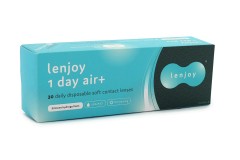
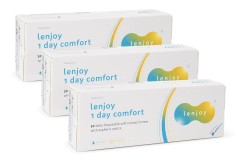
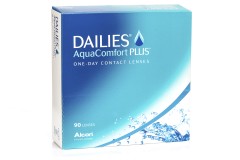
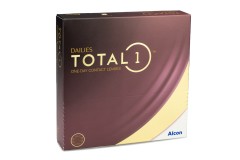

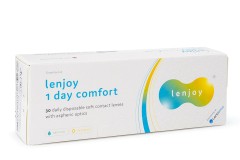
Comments